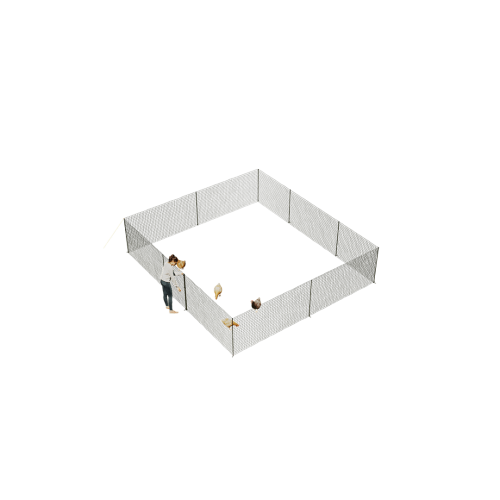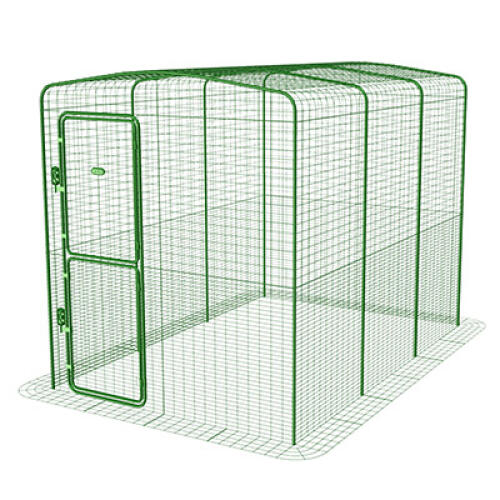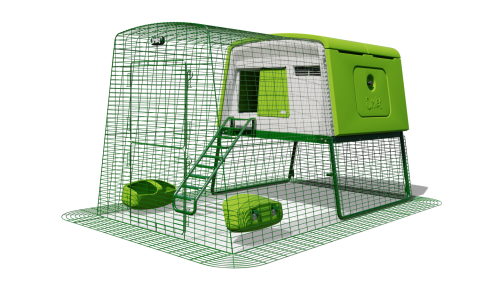Whilst many owners may be familiar with some of the most common chicken diseases, there are some less frequently encountered conditions you would benefit from knowing a little about. This page provides details on some of the rarer chicken ailments, such as Coccidiosis and Fowl Cholera. If there’s something wrong with your bird, and you aren’t one hundred per cent sure you can diagnose the problem yourself, then we recommend taking your bird to a vet as quickly as possible.
Bronchitis
This is one of the most common infectious diseases that chickens will encounter, and as such, lots of birds will be vaccinated against it. It’s worthwhile checking your birds vaccination history to see if they have been protected from this disease. It’s an extremely contagious disease that can be fatal, especially when it’s contracted by chicks. If you see any of the following symptoms in your birds we recommend you contact your vet as quickly as possible:
- Misshapen, soft-shelled eggs
- Lethargy / droopiness
- Reduction of food intake
- Gasping for air
- Diarrhoea
- Coughing and sneezing
- Wet bedding
Botulism
Avian botulism is a potentially fatal condition. It is caused by a bacteria getting into your chicken’s body, usually through an open wound. This bacteria produces the botulism toxin, and if it does so whilst inside your chicken it can cause paralysis. The bacteria feeds off of the protein in your chicken’s body to produce a toxin that causes paralysis of the muscles, including those involved in respiration (breathing). If your chicken shows any of the following symptoms, you will need to contact a vet immediately.
- Paralysis of the legs
- Paralysis of the wings
- Paralysis of the neck
- Paralysis of the eyelids
Colibacillosis
Whilst predominantly affecting younger birds, the bacteria responsible for causing this condition (E.coli) is capable of affecting birds of any age. It can be cured with antibiotics, so if you suspect an infection of this nature, you’ll need to take your bird to the vet.
Symptoms include:
Mycoplasma
Mycoplasma gallisepticum is a bacteria capable of causing a potentially fatal respiratory condition. It’s spread by infected birds – wild birds coming into your garden can be the source of a breakout in your flock. Once a bird has contracted the disease, it can recover, but it will never be fully rid of it. The disease may return when the bird is under stress or strain.
Symptoms include:
If you suspect that your bird is suffering from this disease, you’ll need to contact the vet – they will likely prescribe antibiotics.
Fowl Cholera
This is another bacterial infection that can harm your birds. Like a Mycoplasma infection, birds that have contracted this disease will never be rid of it. They will carry it throughout their lives, whether the infection is mild (with few symptoms and a relatively quick recovery) or acute (a much more serious form which can prove fatal). This infection can be spread via rodent – another to add to the many reasons to protect your chickens from contact with these animals.
Symptoms can vary depending on whether the infection is acute or chronic:
- Acute – discharge coming from the beak
- Chronic - swollen wattles or joints, and a twisted or warped neck
- Unfortunately, another symptom of acute infection is sudden death.
If you suspect an infection, it’s important that you contact a vet as quickly as possible. The treatment is a course of antibiotics.
Fowl Pox
Fowl Pox is a virus transmitted through insects – it’s a real problem in Australia, particularly in the summer. It’s capable of taking a wet form, or a dry form. The wet form is the more dangerous, but the dry form is the more common. Those birds unfortunate enough to contract the wet form of the virus are at risk of suffocating and dying, whereas the dry version is rarely fatal. Both cases are uncomfortable for your birds, so chooks suffering from this condition should be given lots of chicken vitamin supplements to aid recovery.
Symptoms:
- Lack of appetite
- Decrease in egg laying
- Warts and scabs on the bird’s wattle
- Warts and scabs on the bird’s comb
- In the wet form, there will be a cheesy substance in the chicken’s mouth and throat
Unfortunately, there aren’t currently any treatments for this illness, but it’s wise to ask a vet to give you some advice. It may take over a month for the bird to recover, in the mean time, ensure they have plenty of food and water, and provide them with vitamin supplements.
Laryngo Tracheitis
This is a dangerous virus with a potentially fatal outcome. It’s estimated that around 10-50% of birds who contract this disease die. Like several other of the diseases on this page, once a bird has had this disease, they’ll never fully get rid of it, and it can come back later in life. The disease can last for nearly a month and a half, and although there’s no cure available, your vet might choose to prescribe antibiotics to ward against other infections taking hold.
Symptoms of this illness include:
- Gasping for air
- Panting, short of breath
- Coughing
- Coughing up blood of mucal discharge
- Decreases in the number of eggs laid
- A runny nose and eyes
Sour Crop
From time-to-time, your chickens may develop an infection in their crop. This is the fleshy structure at the end of their oesophagus, used for digestion. Whilst an infection here is more likely to occur in young birds, it’s wise to look out for this condition even in older birds, as an infection here can be fatal. If the tissue becomes infected, it can swell, and can lead to a blocked crop. This can prove fatal if the bird doesn’t receive urgent medical attention.
Symptoms include:
- Weight loss
- Decrease in egg production
- Lethargy or droopiness
- A full crop
- Bad breath
Egg Peritonitis
This illness is caused by the yolk travelling towards the abdomen rather than down the oviduct. This results in an infection that can prove fatal quickly, and often when birds start to appear unwell the infection has been worsening for a while already. It’s important that this disease is caught quickly, so be on the look out for the below symptoms:
- A decrease in laying
- Decreased appetite
- Lethargy, droopiness, closed eyes
- Pale comb
- Pale wattle
- Strange stance
Prolapsed Oviduct
This is a health issue caused by a partial collapse of the oviduct – the main symptom is that there will be a bit of red tissue visible when you examine the bird’s vent. It can occur in both young and old birds, and it usually happens after a bird strains too hard to lay an egg.
The first thing to do if you notice that one of your birds has a prolapsed oviduct is to remove her from the rest of the flock. Chickens will tend to peck at one another’s injuries, so it’s best to remove her from the others until she is better. A vet will be able to treat a prolapsed oviduct – the condition can be very painful and it may cause an infection.







Comments
There are no comments just yet